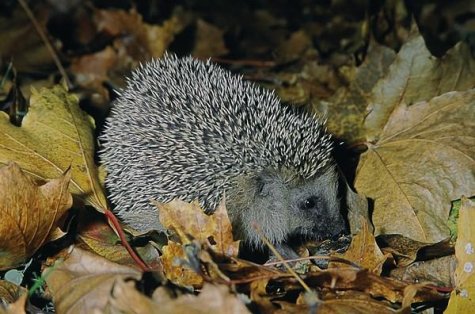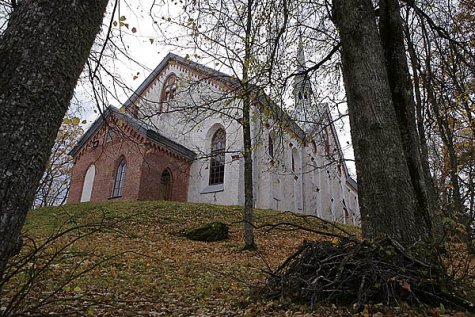Hedgehog’s annual cycle ending
Photos: Arne Ader
Translation: Liis
Hedgehog rustling in maple leaf fall.
|
Hedgehog; European hedgehog |
Harilik siil |
The golden and exceptionally warm autumn goes towards its end, and so does the active part of the hedgehog’s annual cycle. The magic five-degree night-and-day average has not arrived yet – the grass still grows, hedgehogs can fatten up and that is good.
Hedgehogs keep company with humans and they are not to be found deep in a forest – just try to stumble around on short legs in tall withered grass and tangles of branches yourself, not pleasant ... In summer they started moving as dusk fell, but now we can meet hedgehogs even in daylight.
Assuming that the movements of a hedgehog cover a circle of somewhere around three kilometres then by its paths, in denser thickets, will be a couple of resting places and of course the place selected for the hibernation.
If you are almost certain that the hedgehog will spend the winter in a pile of twigs then you can help this nice sympathetic animal a bit. In Arne’s photo is a typical brushwood pile. The top of the pile can be covered with an old piece of plastic sheet. And precisely just the tip, so that wintertime thaws will not get down to make our spikeball wet. That is the greatest danger to the life of hedgehogs. Tight covering causes mildew in the branch pile and that is also very bad for the hedgehog’s wellbeing. The little plastic sheet roof can be fixed with some branches stuck through it or anything else at hand.
The so-called hibernation lasts around half a year; during that time the body weight is halved. Good then if the hedgehog can enter its wintering with a weight of seven hundred grams.
A little about the winter sleep: the body temperature of a brown bear with its great weight is a little above thirty degrees in winter, and compared to summer the energy and oxygen requirements are halved. The little hedgehog has a limited amount of reserve substances in its body; heat is produced by the layer of so-called brown fat. The body temperature of a wintering hedgehog drops to +4 degrees, or 35 degrees less than in summer. Of the daily energy consumption in summer only 1/100-part is used in winter (amazingly economical). The hedgehog’s body needs water in winter and that too is created from burning fat. The intestines must work in winter to eliminate nitrogen – the hedgehog "shits in its winter nest“.
Scientists assure that a hedgehog wakes up at intervals of about once a week to warm up its body to suit changes in weather. During the proper hibernation it is incapable of reacting and doesn’t even respond to interference.
What else to wish for – a dry and warm winter nest.











